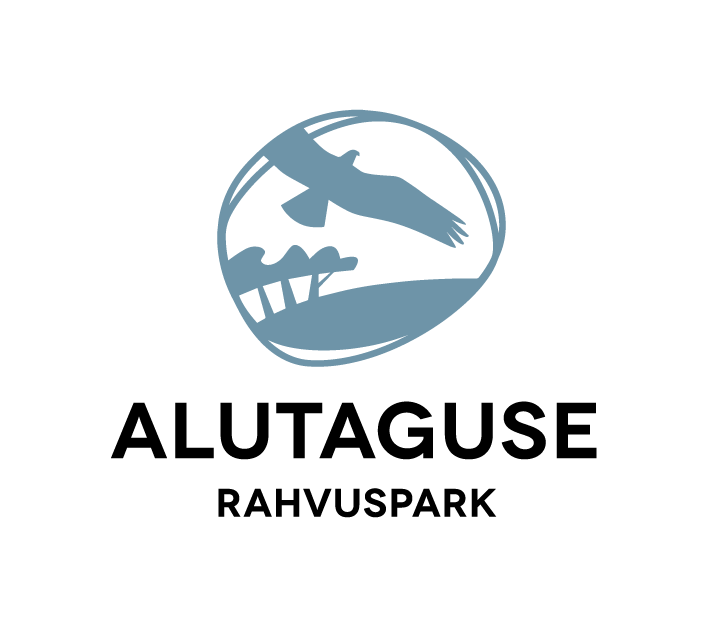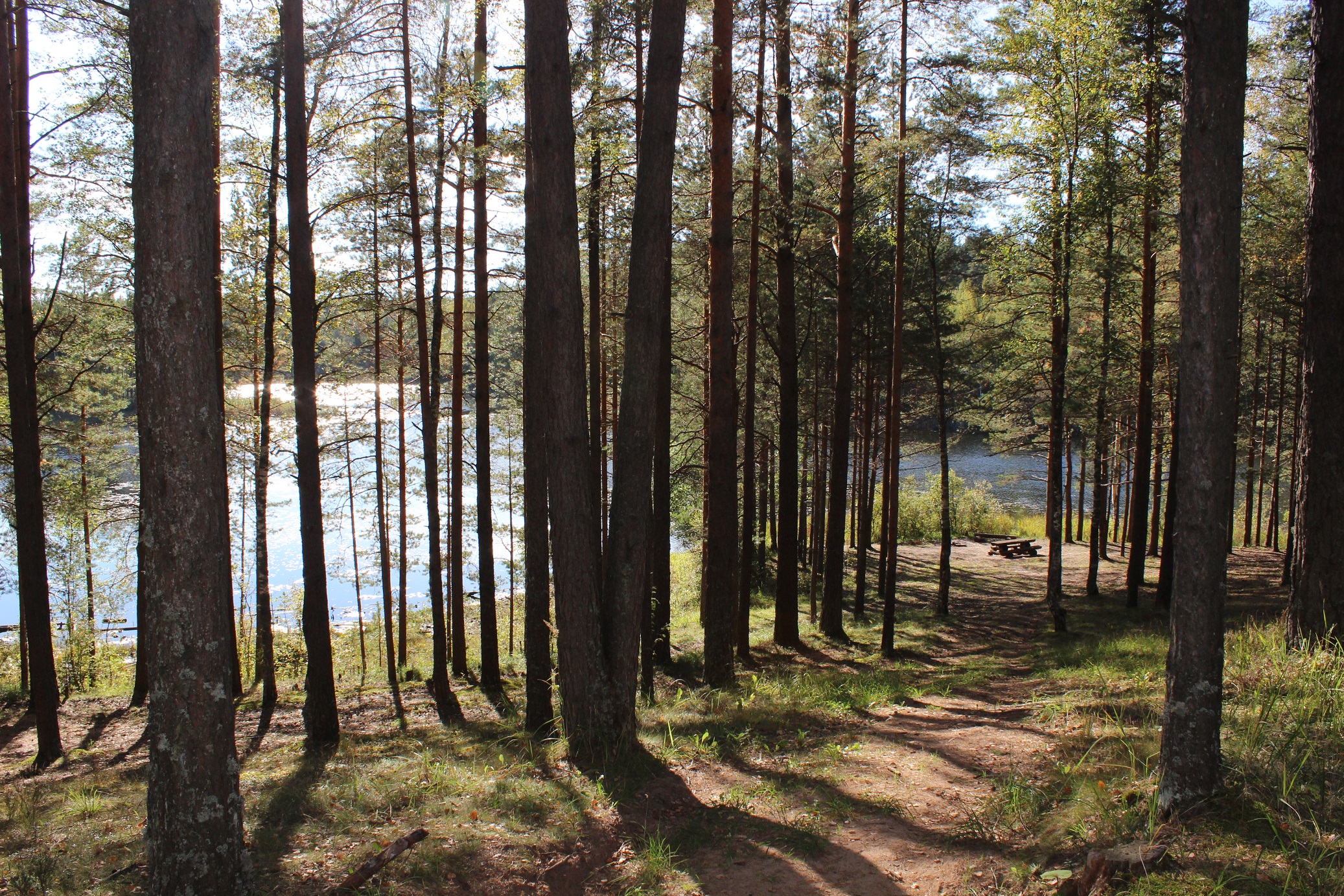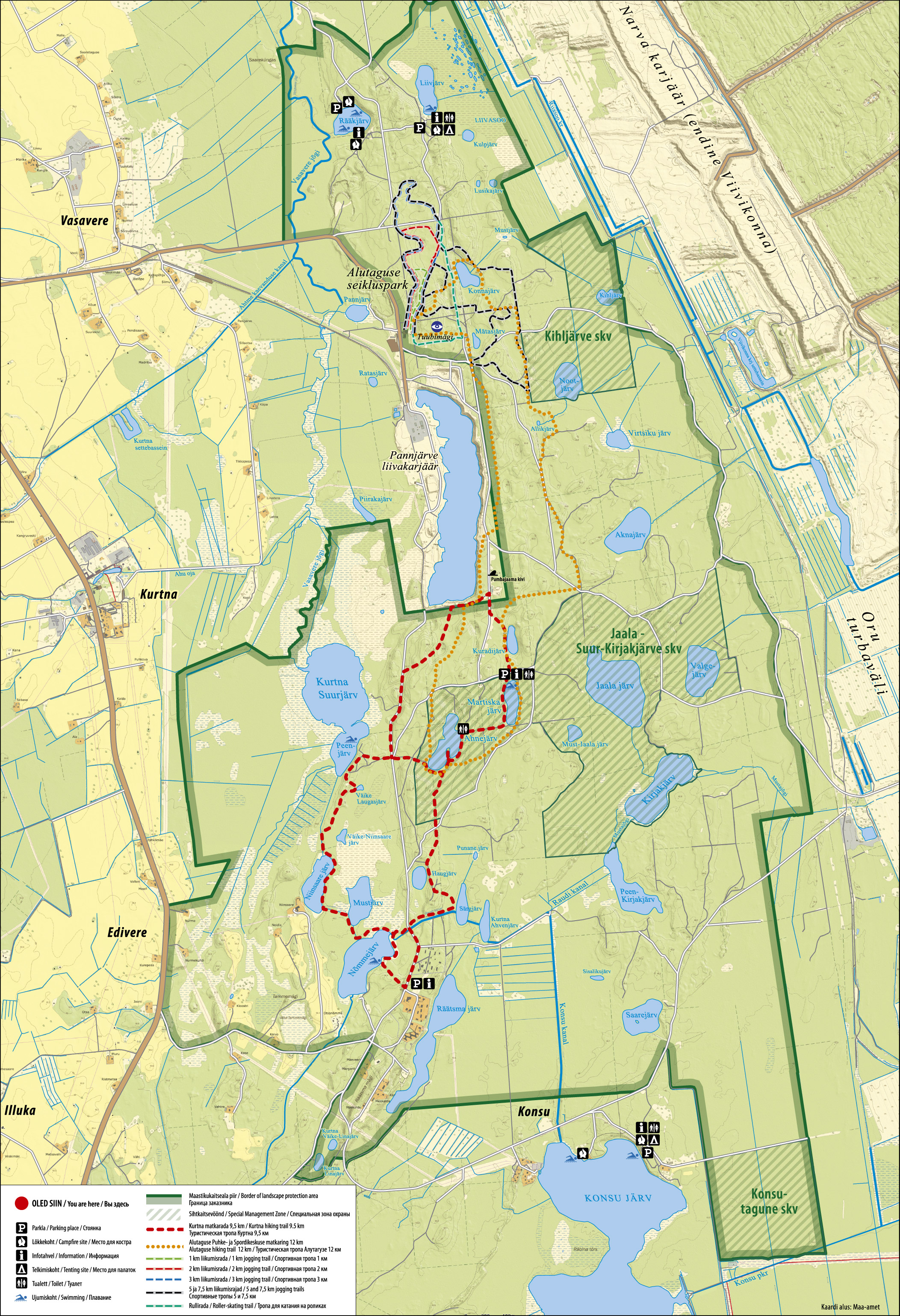
Kames and lakes in Kurtna
Kurtna is Estonia’s lake-richest region: there are 40 lakes per 30 sq. km. Kurtna, is beloved recreation area a part of the Alutaguse national park.

Lake Ahnejärv. Photo: Anne-Ly Feršel
- The formation of the lakes took place about 12,000 years ago in the late glacial age. The development of Lakes Kurtna started when huge blocks of ice, buried in sand and gravel, melted and, as a result, formed deep hollows.
- The clear-watered lakes with scarce vegetation in the middle part of the protected area are unique both in Estonia and all over Europe. Estonia’s only ferrotrophic lake is located in Kurtna, and out of nine main types of lakes, common in Estonia, six are represented here.
- In the lakes of the protection area some rare plants, such as the water lobelia (Lobelia dortmanna) and quillwort (Isoetes lacustris), grow and dozens of algae occur, which are very sensitive to contamination and endangered with extinction.
- The names of lakes refer to the most common species of fish: Ahvenjärv (Perch Lake), Särgjärv (Roach Lake) and Haugjärv (Pike Lake). The European crayfish (Astacus astacus) can also be found.
The kame range at Kurtna amounts to 9 km in length and more than 3 km in width, covering the total of 15 sq metres. The sandwort (Arenaria procera), sand pink (Dianthus arenarius), small pasque flower (Pulsatilla pratensis), flat-stemmed clubmoss (Diphasiastrum complanatum) grow in the dry and sandy heaths. In the forests, there are plenty of orchids.
Lake Liivjärv. Photo: Anne-Ly Feršel
The Kurtna Lakes have been deteriorated by the nearby peat fields, the mining of oil shale, and the Pannjärve sand quarry. The local water is pumped as drinking water to the cities of Ahtme and Jõhvi. The mine water, rich in clay and lime substances, is driven through several lakes, which changes the chemical composition of the lake water. Due to the abundant consumption of water, the water level in several lakes has fallen on average four metres.
Remnants of old trenches and rifle pits can be seen in the landscape because in the 1930s and during World War II there was a military training camp in this place.
The area includes several recreation sites, hiking and health sports trails.

The map: Tiit Kaljuste
- Right of way: you can pass through and stay on private land from sunrise to sunset without causing disturbance to the owner or damage to the property.
- If the private property is fenced or posted against trespassing, the landlord’s permission is necessary.
- You can use a non-propelled floating craft to move around internal water-bodies.
- It is permitted to drive your motor vehicle on public roads and pathways. Parking is allowed within designated parking areas.
- Camping and making fires is allowed only in prepared and designated locations.
- Do not use growing trees or bushes for fire.
- Making fires during a high fire-risk periods is striclty prohibited, even in special camp-fire locations.
- Please make sure no detergents enter natural water bodies
- Please use appropriate toilet facilities
- Please keep your pets under control and on leads at all times, they are a threat to wild life.
- Picking up wild berries, mushrooms and flowers etc is allowed, unless it is a protected species.
- Do not desecrate the natural beauty of the area
- Please report any damage or theft you may witness to the natural habitat to this area to 1313 (Environmental Information)
More informations: loodusega koos , visit estonia, Alutaguse puhke- ja spordikeskus and Kurtna Lake District